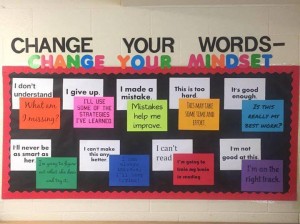Eliza Doolittle (Singing):
Words!
Words! Words! I’m so sick of words!
I get words all day through;
First from him, now from you! Is that all you blighters can do?
The school year ending in 2012 drove me to look for work and I have a bad habit: When I look for work, I find it. I even find positions I am not looking for, such as one teaching Spanish 1, Spanish 2 and bilingual social studies in a high school about 25 easy miles from my home. Administration found me from a teacher database before I even knew the job existed. I remembered Spanish. I remembered high school, and except for the size of those Spanish classes during my first year teaching, I remembered my first year of Spanish fondly. But some time had passed since that first year of projects and dialogs. I never thought to ask about curricular expectations attached to my new Spanish position.
I discovered we were expected to cover an entire textbook, more than 300 pages total, in order to get ready for common midterms and finals that had been written outside of the classroom. Those 300 pages were entirely doable. Still, we had a great deal of work facing us and a great deal of memorization that necessarily came with that work.
“That’s too many words,” certain students kept saying as I assigned homework.
My classes and I had a problem, one that I have come to call the internet predicament, based in the intersection between diminished student efforts and high, curricular expectations. Many students today have become experts at retrieval. They can figure out search terms and string search results together. They can copy and rephrase information they find, hopefully giving credit for information their searches turn up.
Teachers are taught to emphasize information retrieval skills using available technology. We are taught to help students learn to put search results in context. We are taught to use critical thinking questions to stimulate making connections between disciplines as students report on retrieved information.
But when called upon to memorize twenty words, students can act as if they have been asked to both raise the bridge and lower the river. American education has been moving away from memorization. American education has been moving away from repetition and even homework.
“They can look it up on their phones,” administrators will say when we are discussing historical dates, for example. Then those same administrators sometimes give a patronizing smile as they add that teachers need to focus on critical thinking instead of memorization.
Critical thinking depends on background knowledge, however, and retrieval skills cannot compensate for the intuitive understanding that comes with actual knowledge. Critical thinking skills are also of limited use in learning the fundamentals of a new language. I’m not saying such skills are useless. Over time, a great deal of critical thinking will occur during language studies. Comparisons between grammar, vocabulary and usage lead us into insights that may bridge cultures and meanings.
But first, language students must memorize groups of basic words and phrases. No short-cuts will work. Some language-learning techniques may work better than others, but new words have to be stored in the brain. Unfortunately, drilling and memorization are trumpeted as examples of older, outmoded pedagogical methods that show a teacher is not up-to-date on the latest best practices, and to say a teacher uses drilling and memorization has become a criticism of that teacher, proof that he or she is not creating a modern “child-centered” classroom. Yet drilling works. Many old fashioned techniques have never been proven ineffective; instead, these techniques have gone out of fashion.
I pity the poor classroom teacher who has students seated in rows memorizing words on paper if an administrator walks in nowadays. He or she will almost certainly be criticized, even if that criticism comes in the form of helpful suggestions about creating group work or gallery walks. A gallery walk is a discussion technique in which students walk around the room looking at pictures or writing on posters. I like gallery walks. Students need to get out of their seats sometimes.
But flashcards — alone or with a partner — will be more efficient for my purposes when my goal is to teach new vocabulary. I can also play computer games – I love Kahoot – that offer students a chance to play against each other while translating words. But I can’t play games all the time and putting a word into long-term memory requires repeating words over and over. The amount of repetition will vary from student to student, but that repetition is not optional. How does a person become fluent in another language? Students practice until magically, one day, words begin popping onto their tongues and those words somehow keep rolling.
Modern educational theory has created a climate in which too many students consider memorization an imposition. Students want learning to be a game and I am sympathetic. By all means, students should play online language games. I enjoy making classroom Jeopardy games. But language learning goes much faster when students deliberately memorize words. Asking friends to practice new vocabulary in pairs or groups is great, but friends will not always be available. During the game, or after the game is over, I believe students ought to make flash cards or lists for tricky words that caused them problems, either on paper or in their phones. After the game is over, they ought to write lists and then cover either the word or its definition, working their way down their lists in a memorization exercise. In the end, we learn a great deal of language alone — and the physical act of writing helps cement new ideas inside the brain.
Eduhonesty: Our challenge today is creating self-motivated learners who will keep going when the game stops and their seat-partners go home. Students ought to go in search of inexpensive or free language learning apps to use to practice during their own time. A trip back into the past of physical media doesn’t hurt either. Older students ought to pop those library language-learning CDs into their car’s CD player. (Update: CD players with Bluetooth or USB connections are available.) I recommend finding translations of favorite books and ordering these off the internet, either in physical or Audible form.
We all learn new words from seeing those words and saying those words. Students who are taught to regard learning as a social exercise filled with fun activities will always fall behind students who also read and consciously work to learn new words after the fun activities are over. As démodé as I may sound, I think we ought to siphon a little fun out of the learning tank.
One of the best lessons we can give students today is this one: you have to keep going even when it’s not fun. A little drudgery here-and-now will often go a long way toward creating a more fulfilling future life. Someday, someone will create an effective method for sleep-learning, but right now that method’s still fantasy fodder for science fiction novels. In the meantime, NOTHING will substitute for learning new words when mastering a foreign (or domestic :-)) language.










